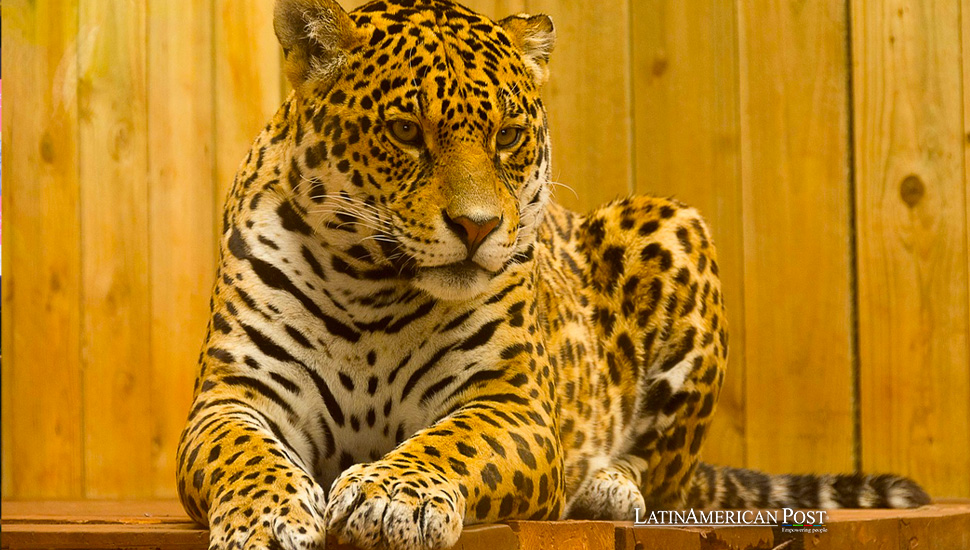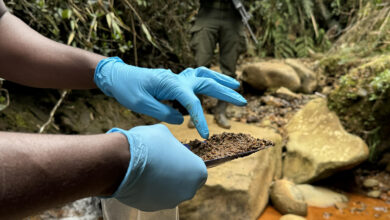Tracking the Shadow: Mexico’s Third National Jaguar Census Aims to Protect Its Stealthy Inhabitants

Mexico announces its third national species census in an ambitious effort to safeguard the elusive jaguar. It is set to reveal preliminary results in August, marking a critical step in conservation within Latin America’s diverse ecosystems.
Preserving Mexico’s Jaguars: A Pivotal National Census
In a move that underscores the growing urgency to preserve one of Latin America’s most iconic and threatened species, Mexico has embarked on its third national jaguar census, a pivotal project aimed at assessing the current population and health of these majestic creatures within its borders. Spearheaded by the National Commission of Natural Protected Areas (Conanp), in collaboration with the National Autonomous University of Mexico (UNAM) and the National Alliance for Jaguar Conservation (ANCJ), this extensive survey is a testament to Mexico’s commitment to biodiversity and environmental stewardship.
Scheduled to take place across 19 Natural Protected Areas (NPAs) and an additional ten sites from March to June, with preliminary results expected in August, the census represents a monumental effort to quantify the impact of conservation measures and strengthen public policies aimed at mitigating threats to the jaguar population. The initiative is a matter of environmental concern and a cultural imperative, reflecting the jaguar’s significant role in Mexico’s cultural tapestry and natural heritage.
The jaguar, the largest feline in the Americas and the third-largest worldwide is a symbol of might, grandeur, and power, immortalized in the temples and cities of ancient civilizations such as Calakmul, Balam Kú, Monte Albán, and Cacaxtla. With a habitat range that includes tropical forests, mangroves, montane mesophyll forests, thorny forests, and pine-oak woods, the jaguar’s survival is intricately linked to conserving vast and interconnected territories.
Population Trends and Conservation Challenges
From the 4,000 individuals estimated to roam Mexico in 2010, the population saw a hopeful increase to approximately 4,800 by 2018, a testament to ongoing conservation efforts. Yet, maintaining these numbers requires extensive habitat preservation, with a single jaguar needing between 2,500 to 10,000 hectares of land and a network of connected territories to thrive.
Mexico’s approach to jaguar conservation, protecting the species and its habitat within 65 Natural Protected Areas and over 300 Voluntary Land Conservation Areas (ADVC), safeguarding more than 9 million hectares of the jaguar’s critical biological corridor, offers a blueprint for conservation efforts across Latin America. These efforts are crucial in a region where deforestation, habitat fragmentation, and human-wildlife conflict pose significant threats to wildlife.
The plight of the jaguar in Mexico mirrors the challenges faced by the species across Latin America. In countries like Brazil, Argentina, and Belize, jaguars navigate a labyrinth of threats, from the encroachment of agriculture and urban development to the dangers of poaching and illegal trade. The Mexican census initiative highlights the importance of regional cooperation and the adoption of cross-border conservation strategies to ensure the jaguar’s survival.
Moreover, the census is not merely a count of individuals; it evaluates the effectiveness of conservation policies and ecosystems’ health. It highlights the interconnectedness of species survival with environmental and cultural preservation, underscoring the role of indigenous and local communities in maintaining the habitats that these apex predators call home.
The jaguar’s significance extends beyond its role in the ecosystem as a top predator; it stands as a cultural icon, representing strength and resilience. Its conservation is intertwined with preserving Latin American cultural identities, where the jaguar is often revered and celebrated in art, folklore, and tradition.
Setting a Precedent: Mexico’s Comprehensive Approach
As Mexico leads the way with its comprehensive approach to jaguar conservation, it sets a precedent for other Latin American countries grappling with similar environmental challenges. The success of this initiative could inspire a continental shift towards more aggressive and collaborative conservation strategies, emphasizing the critical need for habitat connectivity and the protection of vast natural landscapes.
The upcoming census results will provide valuable data on the status of the jaguar population in Mexico and serve as a crucial indicator of the overall health of the region’s ecosystems. They will inform future conservation strategies, policy-making, and international cooperation efforts, offering hope for the jaguar’s continued survival and preserving Latin America’s rich biodiversity.
Also read: Mexico City Faces Historic Water Crisis Amid Climate Change and Urban Challenges
Mexico’s third national jaguar census is a significant milestone in the ongoing effort to protect one of Latin America’s most emblematic yet vulnerable species. It underscores the importance of sustained, collaborative efforts to conserve the jaguar and the region’s rich natural and cultural heritage. As the world awaits the results of this pivotal survey, there is cautious optimism that this initiative will mark a positive stride towards a future where jaguars and humans can coexist in harmony within the vibrant tapestry of Latin America’s ecosystems.





